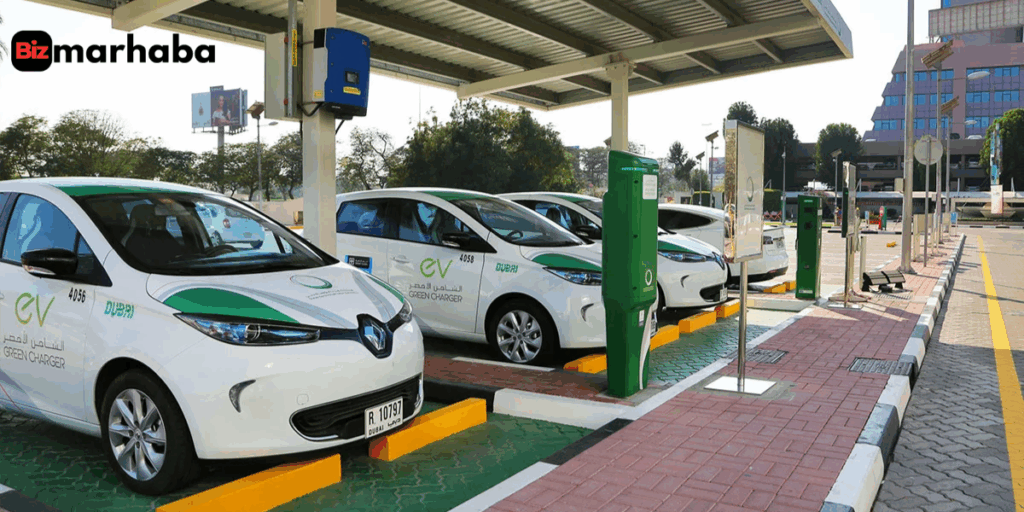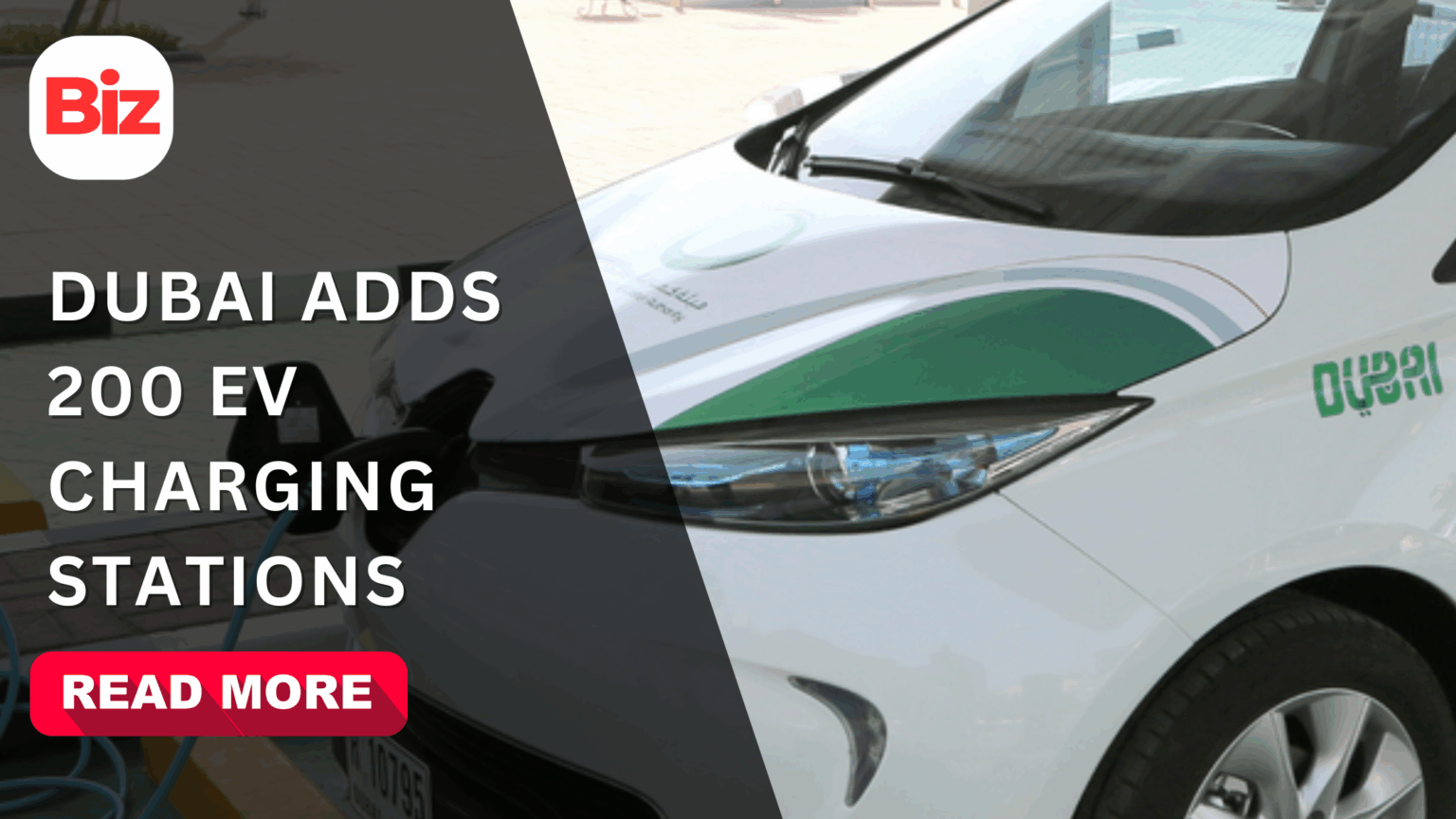- Dubai’s Bold New Plan: 200 Ultra-Fast EV Chargers
- Dubai’s Electric Future Is Already Taking Shape
- Why Dubai is doing this: Incentives, challenges, goals
- How electric vehicle charging stations work
- What drivers & fleet operators should expect
- Looking ahead: What this means for the future
- Risk & what to watch
- Electric Vehicles Dubai: Why This Expansion Matters
- Comparisons: AC vs DC, Dubai vs other cities
- How to leverage this if you’re a driver, fleet, or business
- Conclusion
- FAQs
Dubai is charging ahead with its electric future. The emirate has just announced a bold expansion of its EV charging network: 200 new ultra-fast electric vehicle charging stations will be deployed starting in October 2025. These aren’t ordinary chargers. These are high-powered DC fast chargers, designed to cut charging times dramatically, under 30 minutes in many cases. Here’s everything you need to know: why this matters, how it works, and what it means for drivers, fleets, and Dubai’s ambitions.

Dubai’s Bold New Plan: 200 Ultra-Fast EV Chargers
According to the Dubai Media Office, Parkin and charge&go (a subsidiary of e&) have signed a 10-year partnership to build electric vehicle charging stations across the city.
- Who is behind it: Dubai’s Parkin (the public parking operator) and charge&go (a subsidiary of e&) will lead the rollout.
- How many & when: A total of 200 ultra-fast EV chargers will be installed. The rollout begins in October 2025 with 20 chargers in high-traffic locations. Over the next 12-18 months, the full network will be in place.
- Where: Chargers will be placed in high-density residential communities, retail and leisure hubs, key public destinations, major taxi depots, and strategic locations like Dubai International Airport and major intersections.
- Why ultra-fast: Because time is everything. These are DC fast chargers with capacities up to ~360 kW. They allow taxis and EV drivers to charge much more quickly, meaning less downtime, more usable hours.
Dubai’s Electric Future Is Already Taking Shape
Dubai isn’t starting from scratch. The city already has over 1,270 electric vehicle charging points scattered across malls, public parking lots, highways, and residential areas.
As of 2025, there are more than 40,000 electric vehicles Dubai roads- ranging from compact city cars to high-end models from Tesla and BYD. It’s a dramatic shift from just a few years ago when charging options were limited and EV ownership was a niche.
The demand surge has been fueled by lower maintenance costs, zero fuel bills, and the UAE’s growing focus on sustainability.
Why Dubai is doing this: Incentives, challenges, goals
Motivation & Goals
- Clean mobility & climate policy: UAE has committed to major sustainability goals.The UAE government wants 50% of total energy to come from clean sources by 2050. Encouraging electric vehicles UAE plays a central role.
- Fleet electrification: Taxi fleets are major beneficiaries. With the rollout, chargers will serve taxi depots and enable faster turnaround, reducing idle times. For example, Dubai Taxi Company (DTC) is explicitly part of the plan.
- Urban development & livability: EV charging stations at malls, residences, and along busy corridors make owning or renting EVs more viable. Less range anxiety, more convenience.
Challenges to Overcome
- Power demand & grid capacity: Ultra-fast chargers consume high wattage; infrastructure must support them. Transformers, distribution lines, and utility capacity have to be strong enough.
- Cost for users: Speed costs money. Faster charging technologies and the electricity itself cost more. Will drivers be willing to pay?
- Placement & accessibility: It’s one thing to build chargers; it’s another to put them where people actually need them (not only in malls but in underserved neighborhoods).
How electric vehicle charging stations work
To understand why ultra-fast chargers are a big deal, you need to know how charging works.
Types of chargers
- AC chargers (alternating current): Slower, generally used at homes/workplaces. Lower power (e.g. 7-22 kW), depending on the setup. Good for overnight or parked-for-hours charging.
- DC fast chargers: Direct current, much higher power (50 kW, 150 kW, even up to 360 kW). These drastically reduce charging time. Ideal for stops during trips, taxis, fleet vehicles.
Key components
- Power electronics & converters to switch AC to DC if needed.
- Cooling systems (especially in ultra-fast chargers) to prevent overheating.
- Communication & safety protocols: to match charger power to car battery, monitor battery health, manage load.
- Connectors: different standards (CCS, ChadeMO, Type 2). Ultra-fast chargers often support multiple standards. The technology follows strict electric vehicle testing standards to ensure safety and reliability.
Time & cost trade-offs
- Charging faster costs more in terms of electricity demand and infrastructure investment.
- But less time waiting means more efficiency especially for taxis or people who need to stay on the move.
What drivers & fleet operators should expect
If you own an electric vehicle, or are considering one, or manage a fleet (especially taxis), here’s how this new EV charging station expansion will affect you.
Benefits
- Faster charging: Under 30 minutes in many cases. That means less waiting, more usable time.
- More availability: New stations across more locations mean less hunting around.
- Better cost management: Because of more competition and standardized tariffs (see below), electricity charging is becoming more predictable.
Costs & how to pay
- Tariff structure: Under Cabinet Decision No. 81 of 2024, public AC charging costs are set at AED 0.70/kWh + VAT, DC fast charging at AED 1.20/kWh + VAT.
- DEWA’s EV Green Charger app / portal will likely be used for bookings, payments, possibly offering “guest mode” or special fleet rates. The new ultra-fast stations are expected to use similar models.
What to check before buying / renting an EV
- Does your home or workplace have access to a charger, or is it in an apartment building with EV-friendly parking?
- What is the battery size of the EV and how many kWh you typically use per day? Fast chargers will save you time, but you may not always need them if most of your charging is overnight.
- Charging standards and compatibility: is the EV compatible with DC fast chargers, which connectors it uses, etc.
Looking ahead: What this means for the future
The 200 new ultra-fast stations are not just a headline, but part of a larger shift.
- Network scale: Dubai already has 1,270+ charging points and is scaling rapidly. This new expansion is a leap, especially in capacity (speed) as well as coverage.
- Integration: More apps, real-time maps, reservation systems (Parkin’s mobile app is key), better customer experience.
- EV adoption rising: With better charging infrastructure, more incentive, more confidence. Private users, taxis, rentals all see benefit.
- Policy alignment: Dubai’s urban master plan, UAE net-zero 2050, Clean Energy Strategy, Green Mobility Strategy—all these aim to reduce carbon, increase efficiency, and shift mobility.
Risk & what to watch
Yes, there are still risks, and things to monitor.
- Will the grid keep up, especially as more ultra-fast chargers pull big loads?
- Will electricity generation be clean? If you use EVs but electricity comes from fossil fuels, some environmental benefit is lost.
- Actual usage: chargers might be under-used in certain locations, and over-crowded in others. Maintenance, reliability, uptime are vital.
- Price creep: though the rates are fixed now, as electricity and infrastructure costs rise, charges may go up.
Electric Vehicles Dubai: Why This Expansion Matters
So, what does all this mean for electric vehicles Dubai owners, future buyers, and the fleets that keep the city moving?
For EV drivers in Dubai, the difference between owning an EV vs a petrol/diesel car often comes down to convenience (charging), cost (fuel + maintenance), and availability (where you can charge). With the new ultra-fast charging infrastructure:
- You’re less likely to plan your day around charging stops. Travel becomes smoother.
- For those renting or using EV taxis, downtime drops. That reduces operational costs.
- It also makes EVs more attractive in the used/rental market. Because one of the strongest objections people have is “where and how fast can I charge?”
Comparisons: AC vs DC, Dubai vs other cities
- AC vs DC: AC chargers are cheaper, simpler, but slower. DC ultra-fast chargers cost more to build and run but offer much faster top-ups. In Dubai, slow AC chargers are now charged at AED 0.70/kWh + VAT, fast DC at AED 1.20/kWh + VAT under the unified tariff. That means using DC chargers costs more, but for faster turnaround.
- Dubai vs global peers: Many global cities are making similar pushes—fast chargers, public networks. Dubai stands out for combining high traffic demand (especially taxis), government policy, and wealth of resources to build these networks quickly.
How to leverage this if you’re a driver, fleet, or business
- If you own or lease EVs, track where ultra-fast stations will show up. It might affect which model you choose (battery size, charging standard).
- If you run a fleet (taxis, rentals), these stations will change operational planning. Possibly negotiate special tariff or fleet rates.
- Businesses and property developers: investing in private charging infrastructure (for employees, tenants) still makes sense, especially with ultra-fast public chargers relieving some pressure.
Conclusion
Electric vehicle charging stations in Dubai are gearing up for a major leap. The 200 ultra-fast chargers coming in 2025 will reshape how EV users especially taxis and fleets think about charging. Already, over 1,270 charging points serve tens of thousands of EVs. What’s coming will reduce waiting times, expand access, and push Dubai further toward its greener, cleaner future.
If you’re an EV driver, this means better convenience. If you’re a fleet operator, it means more uptime. Or if you’re someone thinking of buying or renting an EV, this moment may tip the scale.
FAQs
How much does EV charging station cost in Dubai?
The cost for using public charging in Dubai is set under Cabinet Decision No. 81 of 2024. AC (slower) charging costs AED 0.70/kWh + VAT, while DC fast chargers are AED 1.20/kWh + VAT.
If you mean cost of installing a station (for a building or parking lot), it depends heavily on power capacity, construction, permits, etc.—ranges can vary from tens of thousands to hundreds of thousands of AED.
Is electric car charging free in Dubai?
No. There was a period when some charging points were free or had promotional free usage. But as of January 2025, standard tariffs apply. Public AC chargers and DC fast chargers are both charged at the rates mentioned above.
How many EV chargers are in Dubai?
As of mid-2025, Dubai has over 1,270 electric vehicle charging points (public + ultra-fast + fast + wall-box types).
With the additional 200 ultra-fast chargers that will come online, that number will increase significantly.
Where to charge an electric car in Dubai?
There are many options:
- DEWA Green Charger stations (public locations: malls, residential communities, highways, petrol stations)
- Ultra-fast hubs being rolled out under the Parkin / charge&go network, especially in high-density and high-demand areas
- Your own home or workplace (if you can install a charger or have access to a wall-box charger)
- For taxi operators, designated hubs or depots will have or will get better access with this expansion








